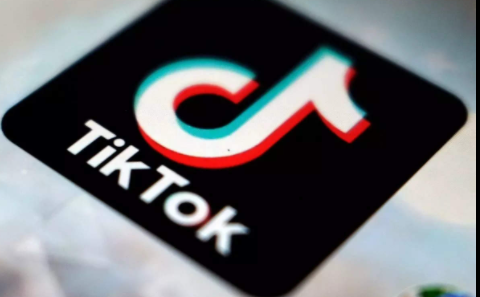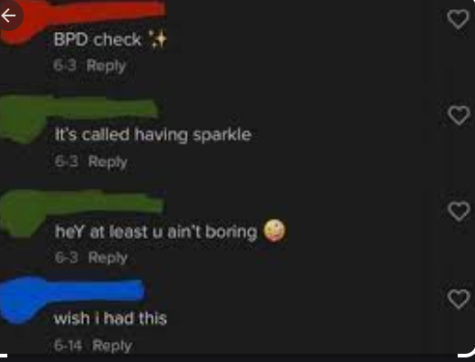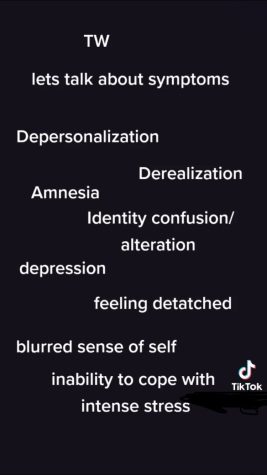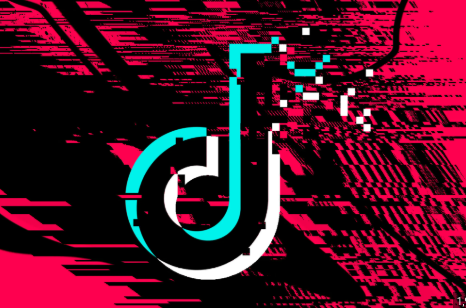Are People On Tiktok Faking Severe Mental Illnesses For Clout?

Courtesy of The Economic Times
January 30, 2022
The ongoing TikTok trend of faking mental illness has been gaining more and more attention recently.
If you’ve been on TikTok or any social media app then you have probably seen a post or two about people being exposed for faking mental illness. The illnesses range from OCD (Obsessive-Compulsive Disorder), ADHD, Anxiety, Depression, Tourette Syndrome, BPD (Borderline Personality Disorder), and the most recent one, DID (Dissociative Identity Disorder). This trend isn’t just obnoxious, it’s also extremely offensive and hurtful to people that do suffer from these mental illnesses. There’s an entire community of people on Tiktok that make it their life’s mission to get validation from Social Media. The people who fake these disorders care more about getting validation and attention but they don’t think about the damage they cause to the people who suffer from these disorders.
Our Generation Z has faced some challenging times with the pandemic, remote learning, a decrease in social presents, and higher levels of depression and anxiety. As social interactions were decreasing, the number of people glued to their phones was increasing. Most Gen Z people, which are ages 10-25, downloaded Tiktok because of boredom.

Identity versus confusion is a stage that occurs in adolescence between the ages of 12 and 18. In this stage, teens try to figure out their true sense of self which is their identity formation. This is usually a time of different phases and aesthetics we try out which helps us find our identity and isn’t harmful. However, this can get detrimental when people are self-diagnosing serious mental illness onto themselves and treating them like just another phase. This harms the person themselves, their young audience, and people that suffer through these illnesses.
“I think it’s with most things that when you have a limited amount of resources for those who are legitimately ill, then that’s harming the people that do have the disorder,” says History Teacher Mrs. Mohan.
“I think it’s just very disrespectful to the people who actually suffer from these illnesses, I can’t imagine how they feel,” says Sophmore Sara Oparaku.
The glorification of these severe illnesses harms the people that actually try to spread awareness about these topics and share their stories. With people faking mental disorders this takes resources away from people that actually need help.
The glorification of these issues also hasn’t just been a ‘Tiktok’ thing. With the recent rise of adolescents on TikTok, it seems more prevalent.
“I think it’s horrible how people glorify mental illnesses because it harms the people who actually suffer from them,” says Sophmore Janae Murray.

The DID (Dissociative Identity Disorder) is one of the most recent disorders that people have picked out. According to Psychology Today, “Dissociative identity disorder, formerly referred to as multiple personality disorder, is characterized by a person’s identity fragmenting into two or more distinct personality states. People with this condition are often victims of severe abuse”. This condition is not only serious but extremely rare. As stated in the Cleveland Clinic, “DID is very rare. The disorder affects between 0.01 and 1% of the population. It can occur at any age.” This disorder is often misdiagnosed and requires multiple psychosocial evaluations and assessments to get an accurate diagnosis. So how can a rare psychological disorder that is diagnosed in about 1.5% of the global population, be so common on Tiktok?
“DID is a very rare condition that forms to specific instances in childhood so it’s unlikely that these many people have it,” says Sophmore Miranda Huhn.
Tiktok trends have been for the most unproblematic, with lip-syncing videos and dances. However, with the new wave of people claiming to have severe illnesses for attention, this makes TikTok’s trends even more toxic. In hopes of getting attention, finding a community, or getting Tiktok fame, some teens fake these disorders. This hurts those that actually suffer from these illnesses. There have been times when people try to post informational videos of their disorder and then there are people in their comment section “fake-claiming” what they’re going through.
“I think that many people want to have attention and be unique, and falsely claiming an illness is a way to do so,” says History teacher Mrs. Mohan.





